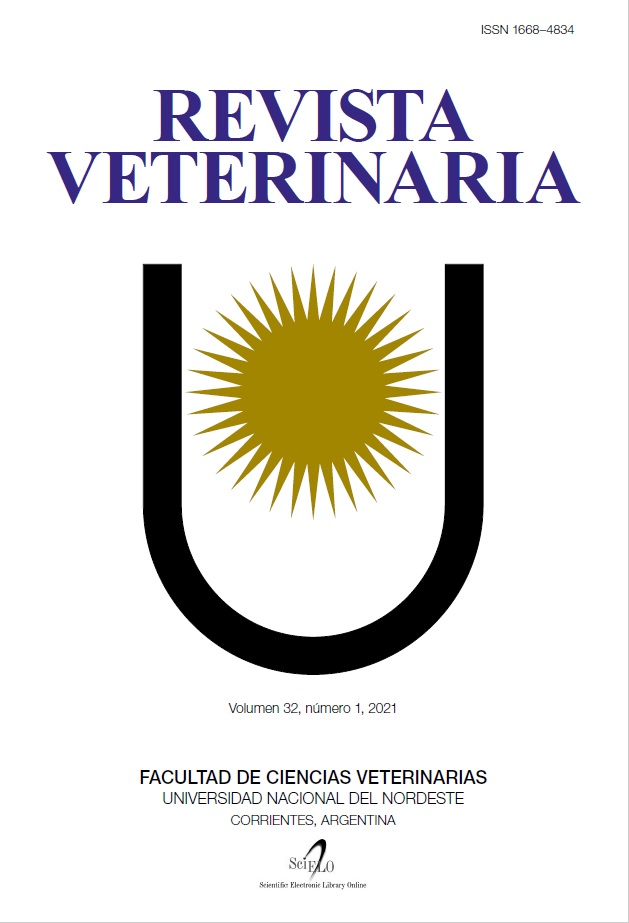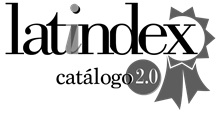Evaluation of productive parameters in fished pigs with different weights
DOI:
https://doi.org/10.30972/vet.3215641Keywords:
pigs, carcass, depletion, yield, viscerasAbstract
Research was conducted in the department of Itapúa, Paraguay. The objective was to evaluate productive parameters in the porcine line obtained from the crossing between Large White and Landrace, fished with different weights. The following was analyzed: live weight (LW), hot carcass weight (HCW), cold carcass weight (CCW), hot carcass yield (HCY), cold carcass yield (CCY) and depletion (D), as well as the weights of the thoracic (TVW) and abdominal viscera (AVW) from a total of 6,476 animals grouped in 21 batches, coming from six supplier farms incorporated to the integrated system of production. Each batch was formed by three categories classified by the hot carcass weight in: category one, until 73 kg; category two, from 73.1 to 79 kg, and category three, with more than 79 kg. Data were analyzed with R statistical software; through the Kolmogorov-Smirnov test it was verified the normality in the distribution of the observations. Then, measures of central tendency and dispersion were estimated, applying variance analysis with balanced incomplete block design and Tukey test as a post-hoc test. Significant differences were detected in terms of LW, HCW, CCW, standing out category three with the highest registers. As for the HCY and CCY, groups two and three were the ones with the best performance, with identical percentage of evaporation loss, after refrigeration; whereas, category one had the lowest performance in all the analyzed parameters. Two suppliers were characterized by the provision of animals with the highest average of LW; only one supplier provided lighter animals, although the HCY and CCY were higher. The viscera weight did not show significant differences among suppliers (p<0,05).Downloads
References
Balseca MA, Bello LD. 2014. Desempeño de cerdos de engorde con dos programas comerciales de alimentación. Tesis de grado, Escuela Agrícola Panamericana, Zamorano, Honduras, p. 25.
Barlocco N, Vadell A, Franco J 2000. Características de carcasas de cerdos con diferente proporción de genes Pampa, Duroc y Large White. Memorias XVI Reunión Latinoam. Prod. Anim., Montevideo, Uruguay.
Bartrina L. 2007. Contexto geográfico general. En: Biodiversidad del Paraguay: una aproximación a sus realidades, 1° ed., Fundación Moisés Bertoni, Asunción, p. 25-32.
Casas G, Afanador G, Rodríguez D. 2009. Componentes anatómicos y coeficientes alométricos en cerdos machos castrados desde el nacimiento. Rev Colomb Cienc Pecu 22: 156-167.
Castrillon W, Fernández J, Restrepo L. 2007. Variables asociadas con la presentación de carne PSE (pálida, suave, exudativa) en canales de cerdo. Rev Col Cienc Pecu 20: 327-338.
Chuen M, Centurión C, Corrales MP, González E. 2015. Manual de producción porcina. Min. Agric. Ganad. & Univ. Asunción, Paraguay, p. 85.
DGEEC. 2003. Atlas censal del Paraguay. Disponible en https://www.dgeec.gov.py/Publicaciones/Biblioteca/Atlas
Censal del Paraguay/10 Atlas Itapua censo.pdf
Fernández M et al. 2014. Efecto del cruce sobre las características de la canal de cerdo celta sacrificado a 7 meses. Actas Iberoam de Conserv Anim 4: 144-146.
García A et al. 2012. Mermas y rendimientos en el proceso de sacrificio del ganado porcino. Rev Comput Prod Porcina 19: 148-151.
Guzmán JC, Sánchez E. 2001. Evaluación de las características tecnológicas (pH, color y marmoleo) de calidad de la carne de cerdo con relación a tres diferentes sistemas de sacrificio. Tesis de grado, Univ. Guadalajara, Jalisco, México, p. 52.
Latorre MA, García BE, Ariño L. 2008. The effects of sex and slaughter weight on growth performance and carcass traits of pigs intended for dry-cured ham from Teruel (Spain). J Anim Sci 86: 1933-1942.
Merchán JO. 2016. Estudio de factibilidad financiera para la implementación de un plantel porcino de engorde en la Comuna Dos Mangas, Santa Elena. Tesis de grado, Univ. Estat. Península de Santa Elena, Ecuador, p. 93.
Peinado B, Almela L, Duchi N, Poto A. 2009. Parámetros de calidad en la canal y en la carne de cerdo chato murciano. Eurocarne: https://eurocarne.com/revista
R Core Team 2018. R: a language and environment for statistical computing, 3.4.4. R. Foundation for Statistical Computing, Vienna, Austria.
Rodríguez JA. 2016. Calidad de la canal, la carne y la grasa de cerdos de cruce comercial, cebados al aire libre y sacrificados a pesos elevados. Tesis de Maestría, Univ Zaragoza, España, p. 81.
Santos R, Trejo W, Osorto H. 2011. Rendimiento de la canal y desarrollo de los órganos torácicos y abdominales de los 25 a los 45 kg en cerdos criollos pelones. Rev Científ FCV-LUZ 21: 396-402.
Segarra EB, Salinas LR. 2016. Influencia de la edad, fenotipo, sexo y peso al sacrificio sobre los indicadores de calidad de los porcinos faenados en el Camal de Azogues. Tesis de grado, Universidad de Cuenca, Ecuador, p. 98.
SENACSA. 2018. Estadística pecuaria 2018. Disponible
en:https://www.senacsa.en https://www.senacsa.gov.py/index.php/informacion-publica/estadistica-pecuaria
Downloads
Published
How to Cite
Issue
Section
License
Revista Veterinaria (Rev. Vet.) maintains a commitment to the policies of Open Access to scientific information, as it considers that both scientific publications as well as research investigations funded by public resources should circulate freely without restrictions. Revista Veterinaria (Rev. Vet.) ratifies the Open Access model in which scientific publications are made freely available at no cost online.











.jpg)
.jpg)



